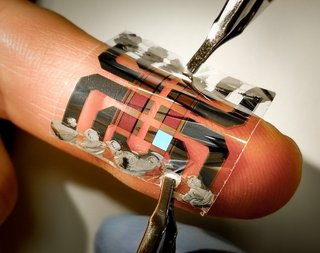In our new publication in Nature Communications we report on making the most durable, lightweight and thinnest light source available so far, which could revolutionise the future of mobile technologies and pave the way for new advances in brain science.
Despite widespread interest, ultrathin and highly flexible light-emitting devices that can be seamlessly integrated and used for flexible displays, wearables, and as bioimplants remain elusive. Organic light-emitting diodes (OLEDs) with μm-scale thickness and exceptional flexibility have been demonstrated but show insufficient stability in air and moist environments due to a lack of suitable encapsulation barriers.
In the publication, we demonstrate an efficient and stable OLED with a total thickness of ≈12 μm that can be fully immersed in water or cell nutrient media for weeks without suffering substantial degradation. The active layers of the device are embedded between conformal barriers formed by alternating layers of parylene-C and metal oxides that are deposited through a low temperature chemical vapour process. These barriers also confer stability of the OLED to repeated bending and to extensive post processing, e.g. via reactive gas plasmas, organic solvents, and photolithography.
This unprecedented robustness opens up a wide range of novel possibilities for ultrathin OLEDs and has implications not only for the future designs of mobile phones and tablets but could also play a key role in neuroscience research and clinical technologies used to help patients who suffer from neurological diseases.

